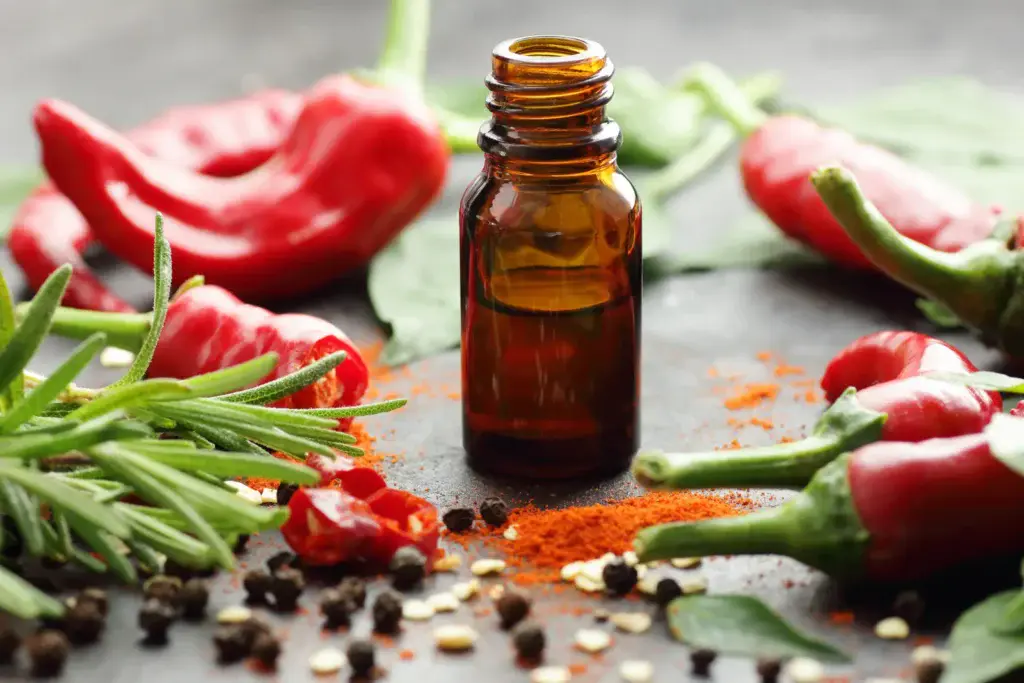
Walk down any grocery aisle today, and you’ll notice a theme: consumers want clarity, authenticity, and simplicity in what they eat. The rise of the clean label movement has made shoppers scrutinize ingredient statements like never before, and one phrase consistently raises eyebrows — “natural flavors.” Once seen as reassuring, it’s now one of the least trusted terms on a label. In fact, surveys show many shoppers believe “natural flavors” is deliberately vague, masking additives they wouldn’t otherwise accept. This skepticism is fueling broader trends: demand for products with named ingredients (like “lemon oil” instead of “natural flavor”), the growth of “made with real fruit” or “spice extract” claims, and the surge in certified organic products where stricter rules apply.
Against this backdrop, it’s important to cut through the confusion: what does “natural flavors” legally mean, what actually falls under the definition, and why does the gap between regulation and consumer perception continue to grow?
How the Law Defines “Natural Flavors”
The official definition comes from 21 CFR § 101.22(a)(3), which states that a “natural flavor” (or “natural flavoring”) is:
“…the essential oil, oleoresin, essence or extractive, distillate, or any product of roasting, heating, or enzymolysis, which contains flavoring constituents derived from a spice, fruit or fruit juice, vegetable or vegetable juice, edible yeast, herb, bark, bud, root, leaf, meat, seafood, poultry, eggs, dairy products, or fermentation products thereof, whose significant function in food is flavoring rather than nutritional.”
(Read the full regulation here)
In other words, the source must be natural (plant, animal, or microbial), and its purpose must be flavor, not nutrition. But within that definition, there’s a wide range of substances that can legally be called “natural flavors.”
What Ingredients Count as “Natural Flavors”?

Here’s a breakdown of the categories included under the CFR definition, along with plain-language explanations:
- Essential Oils – Concentrated aromatic oils from plants, typically obtained by distillation or cold pressing.
Example: orange oil, peppermint oil. - Oleoresins – Extracts made with solvents that capture both aroma and resinous components of spices.
Example: paprika oleoresin, black pepper oleoresin. - Essences or Extractives – Soluble components pulled from natural materials using solvents, steam, or alcohol.
Example: vanilla extract, coffee extract. - Distillates – Flavor fractions separated by distillation.
Example: distilled lemon oil, herbal distillates. - Products of Roasting, Heating, or Enzymolysis – Flavors created by heat or enzymatic processes, often enhancing umami or roasted notes.
Example: roasted onion concentrate, malt extract, enzyme-treated yeast. - Natural Source Materials – Broadly includes flavors from:
- Spices
- Fruits or fruit juices
- Vegetables or vegetable juices
- Edible yeasts
- Herbs, bark, buds, roots, leaves
- Meat, seafood, poultry, eggs, dairy products
- Fermentation products of any of the above
Examples: garlic extract, anchovy extract, cheese flavor from dairy fermentation.
*Important note on protein hydrolysates:
While the FDA’s original definition included “protein hydrolysates,” they are not considered natural flavors in modern practice. These are usually labeled separately (e.g., “hydrolyzed soy protein”) and regulated differently, particularly under USDA organic standards.
A Note on Interpretation
It’s worth pointing out that the CFR, like many parts of U.S. law, is open to interpretation. The FDA provides a framework, but companies and flavor houses often rely on internal policies, industry guidance (such as FEMA’s flavor safety evaluations), and legal counsel to decide how a product gets labeled.
This means the same regulation can be applied in slightly different ways from brand to brand. For example, protein hydrolysates are technically included in the CFR definition, but in practice most manufacturers do not market them as “natural flavors” today. That gray area between what’s written and how it’s interpreted is exactly what fuels confusion — and sometimes distrust — among consumers.
How “Natural Flavors” Differ Internationally
It’s also important to note that “natural flavors” don’t mean the same thing everywhere. In the European Union, the regulations are much stricter than in the U.S.:
- If a product is labeled as “natural strawberry flavor,” at least 95% of the flavoring components must come from strawberries (Regulation (EC) No 1334/2008).
- If the flavoring comes from a mix of sources, companies must call it “natural flavoring with other natural flavorings” — they cannot simply use “strawberry.”
- The EU also restricts certain processing methods and requires clearer disclosure of sources.
By contrast, in the U.S., “natural flavors” can be derived from a much broader range of sources (fruits, vegetables, dairy, meat, seafood, fermentation products, etc.), and a strawberry-flavored product may contain little or no actual strawberry, as long as the components come from natural sources.
What “Natural Flavors” Doesn’t Tell You

The term sounds clean and simple, but there are several catches:
- Source Ambiguity – The label doesn’t have to disclose whether the natural flavor comes from a fruit, a spice, a dairy product, or even an animal extract. For vegetarians, vegans, and those with allergies, that’s a problem.
- Processing Aids & Carriers – Natural flavors can contain solvents, emulsifiers, or carriers (like propylene glycol, glycerin, or alcohol) that don’t have to be listed separately.
- No Nutritional Value – By law, natural flavors are added for taste, not nutrition. “Natural” does not equal healthier.
- GMO & Organic Confusion – Flavors can be derived from genetically modified crops and still be labeled “natural.” Only certified organic products (7 CFR Part 205) require stricter sourcing and processing standards.
Why So Many Ingredients Get Labeled as “Natural Flavors”
If you’ve ever wondered why ingredient statements so often lean on the catch-all phrase instead of listing every flavor component, the answer is part legal, part practical.
- Protecting Proprietary Formulas – Flavor blends are often treated as trade secrets. By grouping them under “natural flavors,” companies can comply with FDA labeling laws without revealing the exact recipe that gives their product its signature taste.
- Simplifying Labels – A single “natural flavors” listing can represent dozens of oils, extracts, or distillates. Bundling them keeps ingredient panels shorter and easier to fit on packaging.
- Allowing Flexibility – Sourcing can shift depending on crop yields, costs, or supplier availability. Using the umbrella term means manufacturers can swap out a lemon extract for another citrus derivative, for example, without needing a costly label redesign.
- Marketing Appeal – Ironically, “natural flavors” often looks cleaner to shoppers than a long list of technical-sounding extracts, even though it hides far more detail.
The end result is efficiency for companies — but a lack of transparency for consumers who want to know exactly what’s in their food.
Why Consumers Don’t Trust the Term Anymore
- Misleading Simplicity – Many shoppers believe “natural flavors” means an orange-flavored product contains orange juice. In reality, the flavor could be a blend of multiple extracts, distillates, and carriers.
- Clean Label Movement – As demand for transparent labeling grows, vague catch-alls like “natural flavors” feel out of step with consumer expectations.
- Allergen & Ethical Concerns – Without disclosure of the source, people with dietary restrictions are left guessing. A “natural flavor” could come from an herb or from a fish — the label doesn’t say.
- Industry Opacity – Flavor houses often treat formulations as proprietary trade secrets. That means the consumer sees only “natural flavors” while the actual ingredient list may be dozens of compounds long.
The Call for Transparency
Consumers aren’t wrong to feel uneasy. While “natural flavors” is a legal definition, it’s also a vague one that leaves too much in the dark. Some companies are moving toward “clean label” practices, specifying the exact sources of their flavors (e.g., “lemon oil” instead of “natural flavors”). Others are eliminating the term altogether in favor of recognizable, kitchen-level ingredients.
From a product development perspective, though, natural flavors can be extremely valuable:
- They deliver consistent taste even when agricultural crops vary in quality or availability.
- They allow for flavor intensity in small amounts, which helps maintain product texture, nutrition, and cost targets.
- They give formulators flexibility and efficiency, making it possible to achieve complex profiles without listing a dozen separate extracts.
- They are often more stable than raw ingredients, extending shelf life and ensuring the product tastes the same from the first bite to the last.
The challenge isn’t that natural flavors are “bad” — it’s that consumers want to know more about what they’re eating.
For now, the best consumers can do is:
- Look for brands that specify flavor sources.
- Choose certified organic products if avoiding synthetic carriers is important.
- Reach out to manufacturers for clarification — some will disclose the exact source if asked.
“Natural flavors” isn’t the villain of the ingredient world — but it’s not the halo term that marketing makes it out to be, either. By understanding what the law allows, consumers can make more informed choices, and brands can see why transparency is now a competitive advantage.
Until labeling laws evolve, the best path forward is building trust through responsible use of natural flavors. That means balancing consumer expectations with product development realities — delivering consistent, safe, high-quality taste experiences while staying within the regulatory framework. Natural flavors aren’t the problem; misunderstanding is. By staying transparent about how we approach compliance and formulation — and by creating flavors that meet both functional and sensory goals — manufacturers can reassure consumers that “natural” still has real meaning.